Results 11,501 to 11,510 of 12091
Thread: Anandtech News
-
05-25-22, 05:42 AM #11501
Anandtech: Sponsored Post: Comino Grando RM Multi-GPU Workstations Offer Unmatched Pe
Comino Grando RM workstations are a new breed of Hyper Performance workstation (HYPE WS) that can transform the workflows of creatives, scientists and medical researchers who rely on artificial intelligence and machine learning.
If your work is dependent on some serious GPU horsepower, Comino Grando RM workstations offer a solution that isn’t just extremely powerful - but also incredibly quiet. This is thanks to their server-grade liquid cooling, which keeps the temperature of the components down, even when working hard. Rather than using noisy fans, which can get distracting, water cooling is more efficient, and crucially, a lot quieter.
Comino Grando RM workstations are built to order in the EU, maintaining the highest possible build quality, and thanks to a range of unique configuration options, you can order one that perfectly suits your needs.
Built to Last
Comino’s motto is “engineered, not assembled”, and each workstation has been designed from the ground-up to provide maximum performance and build quality.
Almost every aspect of these workstations are designed and built by Comino, with over 90% of the components designed by the company itself. This level of detail and control allows each part of the workstation to work as one, delivering unrivalled performance and reliability.
The unique liquid cooling loop in every workstation is controlled and monitored by a controller built by Comino, which uses numerous sensors to keep track of the system’s health and performance. Thanks to Comino Monitoring Software, you can also check your system’s health remotely, for complete peace of mind.
The flexibility of Comino Grando RM workstations doesn’t just stop at unique configurations, but also how you buy. You can purchase Comino Grando RM workstations outright, but for UK customers there are also options to lease them as well.
Handling Everything You Need
Thanks to the raw power of Comino Grando RM workstations, they can cover almost all of your inhouse computation tasks, and you’ll rarely need to rely on cloud services to help finish your projects.
Even better, if you have several Comino Grando RM workstations, they can be used to create your very own cloud, allowing you to access the power of these Hyper Performance workstations remotely - perfectly fitting in with our new hybrid way of working.
Because they are so silent when in use, you can use them in an office or studio, or you can install them in a server rack. When installed in a server rack, they can use external cooling for even more impressive performance, supporting up to seven GPUs per system. This method can also be environmentally friendly, as the heat dispelled by Comino Grando RM systems can be repurposed to heat living and office spaces.
Packing hardware like four Nvidia RTX A100 80GB GPUs plus AMD Threadripper Pro, dual Intel Xeon 8368Qs, or dual EPYC CPUs, air cooling solutions would struggle to keep these components cool without producing a lot of noise.
With server-grade liquid cooling, AI research teams, for example, can use the workstations without being distracted by the whirring of fans. Meanwhile, medical teams working in highly controlled environments will appreciate the slower airflow produced by liquid cooling, as well as reduced dust collection.
So, it’s no surprise that Comino Grando RM workstations have been embraced by companies around the world, and used in projects such as the Flamemapper in California, which uses Comino Grando RM Multi-GPU workstations to help predict the effect of wildfires on structures, and can help emergency planners to place protective measure where they are needed the most.
Many CG and 3D rendering studios rely on Comino Grando RM Multi-GPU workstations to create complex and realistic models and scenes.
Danil Krivoruchko, a renowned digital artist based in New York, and who works with the likes of Apple, Nike and Boeing, explains how Comino Grando RM workstations have helped him with his work.
“I’ve used numerous Comino Grando RM workstations during my work on the breakthrough user-influenced self-evolving NFT project, Organic Growth: Crystal Reef, which combines generative art, blockchain, NFTs and user interaction. This project is so unique, multi-layered and complex both visually and computationally, that we had to hire the whole render farm, packed with Grando RMs by Comino, for 3 months to support its development. I got the workstation for myself, as well, to progress through the project faster, as it’s hard to find another workstation as versatile and quiet as Grando RM.”
Successful AI artist and NFT enthusiast from New Zealand, Jesse Woolston, also relies on Comino’s workstations.
“My approach is to use the Comino Grando RM for all my modeling and simulation. So I use it for production, then I have a small render farm to utilize GPU alongside the Comino.
My work focuses on using AI & physics modeling as a means to re-contextualize how we see nature. So far, I've been able to use the Comino Grando RM in multiple circumstances from training my own models to simulating the oceans. The machine has been working beautifully in both large and small scales.
The main factor as to why I love the Comino Grando RM is its ability to be diverse with training and modeling, where I can give it any and all assignments.
I don't have to think too deeply about how to adapt the work to fit my tools, I am able to just utilize the tools and focus on the art.”
Influencers such as sentdex and LEDunit have also been blown away by the possibilities of Comino Grando RM workstations.
If it sounds like Comino Grando RM workstations would be perfect for your projects, then head over to Comino’s Grando website to find out more.
More...
-
05-25-22, 12:02 PM #11502
Anandtech: Computex 2022: ASRock Unveils X670E Taichi and Taichi Carrara Edition Moth
At Computex 2022 in Taipei, Taiwan, ASRock has lifted the lid on a few of its X670E motherboards designed for AMD's upcoming Ryzen 7000 series of processors. The first two of ASRock's socket AM5 motherboards include the X670E Taichi and the special edition X670E Taichi Cararra. While both X670E Taichi boards are aesthetically different, the two share the same core feature set, including support for PCIe 5.0, DDR5 memory, and dual Thunderbolt 4-enabled USB Type-C ports on the rear panel.
The ASRock Taichi series is one of the most popular and premium models in its line-up. For years, the Taichi aesthetic has brought cogwheels to the design, and the Z590 Taichi for Intel's 11th Gen Core series even included a motorized cogwheel integrated into the rear panel cover.
The only difference between the ASRock X670E Taichi and the X670E Taichi Cararra is the design. The regular X670E Taichi has a primarily black finish with a bronze-looking trim on the left-hand side of the board, with RGB LEDs built into the chipset heatsink.
The X670E Taichi Cararra is based on Cararra Marble from Italy, which is white in color and was used for many years in ancient Roman architecture due to its elegance and strength. It is designed to celebrate the 20th anniversary of ASRock, and ASRock hasn't specified if the Cararra edition will be limited in numbers like its Aqua series or if it will cost more than the regular X670E Taichi.
In terms of features, both ASRock X670E Taichi models boast an advertised 26-phase power delivery, which is mightily impressive. Other features include support for DDR5 memory, dual full-length PCIe 5.0 slots (x16, x8/x8), and one PCIe 5.0 x4 M.2 slot, three PCIe 4.0 x4 M.2 slots, and eight SATA ports.
A Realtek ALC4082 HD audio codec and ESS Sabre ES9218 DAC power the onboard audio solution on the rear panel, while a Killer E3100G 2.5 GbE controller and Killer AX1675 Wi-Fi 6E provide solid networking connectivity. Regarding connectivity, ASRock includes dual Thunderbolt 4 Type-C ports, five USB 3.2 G2 Type-A, and three USB 3.2 G1 Type-A ports.
At present, ASRock hasn't revealed pricing on the X670E Taichi and X670E Taichi Cararra Edition motherboards, but we expect to find out more closer to the launch of AMD's Ryzen 7000 processors expected in the fall.
Source: ASRock
More...
-
05-25-22, 12:02 PM #11503
Anandtech: Computex 2022: MediaTek Announces Wi-Fi 7 Access Point and Client Platform
Mediatek was one of the first vendors to demonstrate working 802.11be-compliant silicon under the Filogic lineup in January 2022. As part of the announcements at this week's Computex, the company provided additional technical details along with part numbers. The Filogic 880 platform will service access points, routers, and gateways, while the Filogic 380 will be seen in the client devices.
Wi-Fi 7 / 802.11be Background
The 802.11 Working Group focused on extremely high throughput when starting work on 802.11be. This has been achieved primarily through a combination of three different aspects:
- Support for up to 16 spatial streams
- Support for channel widths up to 320MHz (with operation in 2.4 GHz, 5 GHz, and 6 GHz bands)
- Support for 4096-QAM (4K-QAM) resulting in better utilization of available spectrum (a faster modulation / coding scheme).
It must be noted that wider channels are available only in the 5 GHz and 6 GHz bands. Theoretically, these aspects allow for up to around 46 Gbps of wireless throughput. 802.11be also aims to enable usage of Wi-Fi for real-time applications by including features for low-latency communications such as Multi-link operation (MLO). This allows a client and an access point to simultaneously communicate over multiple channels that might even belong to different bands.
802.11ax introduced OFDMA to split the channel into multiple resource units (RUs), allowing multiple clients to receive data packets simultaneously. Wi-Fi 7 brings in a Multiple RU (MRU) feature that allows punctured RUs (at a 20 MHz granularity). Puncturing enables interference mitigation, and also increases the OFDMA efficiency.
The benefits of MRU are brought out in the above picture - on top, puncturing allows improvement in spectral efficiency, and hence, data bandwidth. Below that, we see obvious latency benefits when multiple clients are simultaneously active.
Interference and co-existence with non-Wi-Fi users of the same spectrum is handled using automatic frequency coordination (AFC). While Broadcom's pledge of support for the Open AFC initiative, and Qualcomm providing its own turnkey solution for its customers, Mediatek has only indicated that the Filogic 880 platform supports AFC, with no additional details.
Mediatek Filogic 880 Platform
Mediatek's Filogic 880 platform services the Wi-Fi 7 access point and wireless router market. Similar to its competitor's offerings, the platform supports all the major Wi-Fi 7 features - 320 MHz bandwidth in the 6GHz band, 4K-QAM, Multi-link operation (MLO), Automatic Frequency Coordination (AFC), and Multiple Resource Units.
The platform supports up to five bands with independent RFICs that communicate with the Filogic 680 Wi-Fi 7 baseband chip. While traditional routers may use only three bands, mesh systems and premium routers can make use of the support for two additional bands. At the heart of the reference design is a 1.8 GHz quad-core Cortex A73-based WiSoC. It also includes a network processing unit (NPU) with hardware-accelerated QoS and tunneling offload engines. The WiSoC doesn't include an integrated switch, though. Designs are expected to adopt an external switch to translate one of the two 10Gbps USXGMII ports to either a single 10GbE, or a mix of NBASE-T and Gigabit Ethernet ports. Various other high-speed I/Os are also available in the WiSoC.
Unlike Qualcomm (whose announcement of the Wi-Fi 7 Networking Pro product suite was covered earlier this month), Mediatek is adopting an open approach in terms of making technical details of the platform available to the public. Broadcom also adopted a similar approach while introducing their product suite.
The Filogic 880 platform's WiSoC is fabricated in a 6nm process. According to Mediatek, this delivers significant power efficiency compared to its competitors (without public knowledge of the fabrication process for Qualcomm's and Broadcom's offerings and/or public availability of their platforms, this claim is difficult to evaluate).
The MAC/baseband is implemented in the Filogic 680 part. Here, Mediatek opts for an interesting approach The 6GHz band also adopts a 4T5R (quad-transmit, penta-receive) antenna configuration to boost throughput and range, particularly for backhauls in mesh systems. The Filogic 680 contains the MAC and baseband logic for all three bands, and also includes MLO control. Mediatek contends that this approach is better than the scheme of discrete MAC/PHYs for each band between the WiSoC and the basebad/RFIC, and putting the MLO logic in the WiSoC - in terms of latency (claims of up to 100x improvement) as well as board design cost.
Mediatek's reference design is a four-layer PCB, which should lead to a lower cost for its customers. Mediatek claims that the multi-chip MAC / PHY / baseband approach of its competitors results in higher cost due to more complex PCBs (six or eight layer PCBs). These aspects should be readily evident to end users when routers / APs based on platforms from different vendors come to the market.
Mediatek Filogic 380
On the client side, Mediatek is announcing the Filogic 380 combo solution with support for Wi-Fi 7 and Bluetooth 5.3. This combo single-chip solution is also built on a 6nm process. The 2x2 solution supports speeds up to 6.5Gbps with dual-band dual-concurrent operation. 320 Mhz bandwidth, 4K-QAM, MLO, and MRU are supported.
Mediatek also indicated support for an extra receive antenna to improve performance and range for Bluetooth 5.3 connectivity by enabling MRC (multiple receive combining). Bluetooth LE audio is also supported. The Filogic 380 also includes coexistence technology to ensure that BT and Wi-Fi can both operate in the 2.4GHz band without interference. Host connectivity is either via PCIe 4.0 x1 or USB 3.0.
Mediatek is currently demonstrating both platforms at Computex 2022. Based on Mediatek's claims, it appears that routers and APs based on the Filogic 880 should hit very attractive price points without sacrificing anything in terms of performance or features. Products based on the new Filogic platforms should start appearing in the market within a few quarters.
More...
-
05-26-22, 11:07 AM #11504
Anandtech: ASML High-NA Development Update: Coming to Fabs in 2024 - 2025
It took the semiconductor industry over a decade to prep everything needed for production of chips using extreme ultraviolet (EUV) lithography. It looks like it is going to take a lot less to reach the next level — EUV with High-NA.
Higher Resolution Needed
Nowadays the most advanced chips are made on 5/4-nm-class process using EUV lithography ASML's Twinscan NXE:3400C (and similar) systems that feature a 0.33 numerical aperture (NA) optics, which provides a 13 nm resolution. This resolution is good enough for a single-pattern approach at 7 nm/6 nm nodes with 36 nm ~ 38 nm pitches and at 5nm with 30 nm ~ 32 nm pitches. But as pitches get below 30 nm (at beyond 5 nm nodes) the 13 nm resolution might call for dual lithographic exposure that is going to be used for years to come.
For post-3nm nodes, ASML and its partners are working on a brand-new EUV tool — the Twinscan EXE:5000-series — featuring a 0.55 NA (High-NA) lens capable of an 8nm resolution, which is projected to avoid multipatterning at 3 nm and beyond. The new High-NA scanners are still in development, they are expected to be extremely complex, very large, and expensive — each of them will cost over $400 million. High-NA will require not only new optics, but a new light source too, and even new fab buildings to accomodate the larger machines, which will require major investments.
But in a bid to keep scaling performance, power, area, and costs (PPAc) of semiconductors, leading makers of logic chips and memory devices are willing to adopt new technologies, and High-NA EUV scanners are crucially important for post 3-nm nodes. As a result, demand for High-NA tools is, well, pretty high.
10 to 20 High-NA Systems to Be Delivered
Several weeks ago, ASML disclosed that it had received multiple orders in Q1 2022 for its High-NA Twinscan EXE:5200 systems (EUV 0.55 NA) from both logic and DRAM customers. Last week it clarified that it had five orders for pilot High-NA scanners due to be delivered in 2024 and 'over five' orders for subsequent models featuring higher productivity that will be delivered starting from 2025, reports Reuters.
Interestingly, back in 2020 ~ 2021, ASML said that it had has received High-NA commitments from three customers, for a total of up to 12 systems. Keeping in mind that logic makers are usually the first to adopt leading edge tools, it is safe to bet that Intel, Samsung Foundry, and TSMC committed in 2020 ~ 2021 to get pre-production High-NA scanners. Moreover, ASML has already started building the first High-NA system, which will be completed in 2023 and will be used by Imec and ASML customers for research and development purposes.
"On High-NA EUV, we are making good progress and have currently started the integration of the first High-NA system in our new cleanroom in Veldhoven," said Peter Wennink, chief executive of ASML. "We received multiple orders for our EXE:5200 system in Q1. We also received additional EXE:5200 orders this month, April. With these bookings, we now have High-NA orders from three Logic and two Memory customers. The EXE:5200 is ASML's next model High-NA system and will provide the next step for lithography performance and productivity."
ASML's Twinscan EXE:5200 is considerably more complex than regular Twinscan NXE:3400C machines, so it takes longer time to build these tools. The company hopes that it will be able to deliver as many as 20 High-NA systems in mid-term future, which probably means that its customers will have to compete for these machines.
"We are also discussing with our supply chain partners to secure a capacity of around 20 EUV 0.55NA systems in the medium term," said Wennink.
Intel First to Adopt Pre-Production Tools
So far, the only process technology confirmed to use ASML's High-NA tools is Intel's 18A node and that one was once scheduled to enter high-volume production in 2025, around the time when ASML starts to deliver its production High-NA EUV systems. But recently Intel pulled-in the start of18A production to the second half of 2024 and indicated that it could use ASML's Twinscan NXE:3600D or NXE:3800E for its 18A manufacturing, presumably via multi-patterning.
While Intel's 18A technology would greatly benefit from High-NA EUV tools, it looks like Intel does not necessarily need Twinscan EXE:5200 machines for this node. Usage of multi-patterning for commercial chips means a longer product cycle, lower productivity, higher risks, and potentially lower yields (though the latter is not cast in stone). Yet, it looks like Intel wants its 18A node to arrive as soon as possible, perhaps because it considers it a major tool that will allow it to recapture process technology leadership from TSMC. Consequently, Intel's updated plans are now to phase in High-NA tooling during 18A's lifecycle if the tools are completed on time.
Of course, it remains to be seen whether usage of 0.33 NA EUV scanners for 18A will offer enough productivity for Intel and customers of Intel Foundry Services. But, at least in 2024, Intel is not going to have any choice but to use machines that it has.
Other leading makers of semiconductors — TSMC, Samsung, SK Hynix, and Micron — will also inevitably adopt High-NA EUV for high-volume manufacturing of chips. The only question is when exactly this is when exactly this is set to happen.
More...
-
05-26-22, 11:51 PM #11505
Anandtech: AMD Corrects Socket AM5 Power Specifications: 170W TDP and 230W PPT
At Computex 2022, the CEO of AMD, Dr. Lisa Sui, unveiled its Ryzen 7000 series of processors, as well as the associated AM5 platform. But while discussing specific details about its new platform for Zen 4 and beyond, AMD inadvertently ended up creating a conflux of confusion around the AM5 platform by quoting different power figures to different groups. Ultimately, at different points AMD was quoting 170 Watts as both the highest nominal TDP supported by the platform, as well as the Power Package Tracking (PPT) rating, which is the absolute highest amount of power a chip can draw under load. It goes without saying that these two claims shouldn't both be right, and a correction was needed.
As first reported by the Tom's Hardware crew, AMD has published a statement addressing the confusion, and proving the correct values. In short, the 170 Watt TDP was correct. Meanwhile the PPT value is actually 230 Watts – which at 1.35x the TDP rating, is typical for AMD's Ryzen processors.
AMD's full statement is below:
AMD would like to issue a correction to the socket power and TDP limits of the upcoming AMD Socket AM5. AMD Socket AM5 supports up to a 170W TDP with a PPT of up to 230W. TDP*1.35 is the standard calculation for TDP v. PPT for AMD sockets in the “Zen” era, and the new 170W TDP group is no exception (170*1.35=229.5).The overall increase in power specification figures for the AM5 platform was not unexpected – part of the benefit of the move to LGA sockets is additional pins for power delivery – but this finally settles the matter of just how much power AMD's new socket and platform are designed to deliver. Motherboard vendors will no doubt go (well) past this on their high-end boards, of course, but 170W/230W will be the baseline for any motherboard that wants to officially support high-end AM5 chips.
This new TDP group will enable considerably more compute performance for high core count CPUs in heavy compute workloads, which will sit alongside the 65W and 105W TDP groups that Ryzen is known for today. AMD takes great pride in providing the enthusiast community with transparent and forthright product capabilities, and we want to take this opportunity to apologize for our error and any subsequent confusion we may have caused on this topic.
CPU power consumption has been on the rise for the past several years, as we're now well into the Dark Silicon era. While an individual CPU core still only draws a modest amount of power – on the order of 20W to 30W for a high-performance core – the total power requirement quickly balloons for high-end processors, which pack upwards of 16 cores. As a result, power delivery limits are typically the constraining factor for heavily multi-threaded workloads, as CPUs have to back down on clockspeeds in order to stay within their power envelopes. Increasing platform power limits, in turn, offers more headroom for keeping more cores clocked higher more often.
Though it should be noted that AMD's clarifications today are for the AM5 socket, not the initial Ryzen 7000 series chips that will use it. AMD doesn't necessarily have to tap into the full TDP of the socket right away – though for the aforementioned MT performance reasons, there's good reason to. So officially, we still don't know what the TDPs of the high-end Ryzen 7000 processors will be; but unofficially, it wouldn't be surprising to see the top chips approach 170 Watts.
Finally, it would seem that we should expect to see the Ryzen 7000 family hit that full TDP out of the gate. According to a comment from an AMD spokesperson on Reddit, the top TDP of the Ryzen 7000 series will indeed be 170 Watts, with PPTs reaching 230 Watts.
More...
-
05-26-22, 11:51 PM #11506
Anandtech: Computex 2022: TeamGroup Announces T-Force Delta RGB DDR5-6600 CL34 and DD
Memory vendor TeamGroup has announced two new T-Force Delta RGB DDR5 memory kits during Computex 2022, being held in Taipei, Taiwan. This includes a high-frequency kit clocked to DDR5-6600 with a latency of CL34, as well as a low-latency kit operating at DDR5-6000 CL30. Both will be available in black or white and come with RGB LEDs.
Intel was the first company to introduce DDR5 memory to the desktop market in November 2021 with its 12th Gen Core series of processors. During its keynote at Computex, AMD announced that its latest Ryzen 7000 processors, due in the fall, will also support DDR5 memory, among many other interesting features. We did test how well DDR5 memory scales on Intel's 12th Gen Alder Lake platform, and there is merit to using both high-frequency and low latencies to maximize performance.
TeamGroup intends to add two new speed grades of its T-Force Delta RGB DDR5 memory, one with DDR5-6600 CL34 specifications and one with DDR5-6000 CL30. Both variants will be available in 32 GB kits (2 x 16 GB), with options including a striking white or subtle black heatsink. Both color schemes include an RGB-enabled lightbar with a 120° angle with smart RGB customization control. TeamGroup states that it uses carefully selected memory ICs, but they don't specify which manufacturer's DRAM the kits will be using.
The TeamGroup T-Force Delta RGB DDR5-6600 CL34 and DDR5-6000 CL30 are expected to hit retail shelves in July, but we currently don't have any details on pricing.
Source: TeamGroup
More...
-
05-31-22, 12:10 PM #11507
Anandtech: Intel Unveils Rialto Bridge: Second-Gen Xe-HPC Accelerator to Succeed Pont
With ISC High Performance 2022 taking place this week in Hamburg, Germany, Intel is using the first in-person version of the event in 3 years to offer an update to the state of their high performance/supercomputer silicon plans. The big news out of the show this year is that Intel is naming the successor to the Ponte Vecchio accelerator, which the company is now disclosing as Rialto Bridge.
Previously appearing on Intel’s roadmaps as “Ponte Vecchio Next”, Intel’s GPU teams have been pipelining the development of Ponte’s successor even as the first large installation of Ponte itself (the Aurora Supercomputer) is still being stood up. As part of the company’s 3 year (ish) roadmap that leads to CPUs and accelerators converging with the Falcon Shores XPU, Rialto Bridge is the part that will, if you’ll pardon the pun, bridge the gap between Ponte and Falcon, offering an evolution of Ponte’s design that’s making use of newer technologies and manufacturing processes.
More...
-
05-31-22, 12:10 PM #11508
Anandtech: Intel Showcases Sapphire Rapids Plus HBM Xeon Performance at ISC 2022
Alongside today’s disclosure of the Rialto Bridge accelerator, Intel is also using this week’s ISC event to deliver a brief update on Sapphire Rapids, the company’s next-generation Xeon CPU which is shipping later this year. While Intel has been beating the drum for their forthcoming, 4th Generation Xeon Scalable chip for a while, we have yet to hear anything of significance about its expected performance – particularly in the HPC space. So ahead of its formal launch a bit later this year, Intel is finally talking a bit about the expected performance of the HBM-equipped version of the chip, which is aimed in particular at the HPC/supercomputing crowd.
Intel’s first tiled Xeon processor, Sapphire Rapids is also Intel’s first CPU to offer optional on-chip HBM memory, which is being dubbed Sapphire Rapids Plus HBM. The addition of 64GB of HBM2e makes it a fairly complex and expensive chip, but also one with access to far more memory bandwidth than any x86 CPU before it. As a result, the chip is of particular interest to a subset of the high-performance compute community, as it offers an alternative route for workloads that aren’t suitable for GPUs, but still need access to vast amounts of memory bandwidth.
As part of their ISC presentation today, Intel is releasing two slides with performance figures for the HBM version of Sapphire Rapids (Sapphire Rapids Plus HBM). The idea here is to show off the combination of architecture improvements – and in particular, the dedicated accelerator blocks – combined with using 64GB of HBM2e memory to keep those blocks well fed. The pre-production processors are being compared to Intel’s Xeon Platinum 8380 (Ice Lake-SP) chips.
Bearing in mind that these are going to be cherry-picked performance figures, Intel is seeing anywhere between a 2x speed-up in things like the WRF weather forecasting model, to over a 3x improvement for the CloverLeaf Euler equation solver. Both of which are somewhat narrow use cases, but important ones for the HPC market segment.
Sapphire Rapids Plus HBM is due to be released alongside the rest of the Sapphire Rapids family later this year. According to Intel’s current roadmaps, it is due for a successor in the 2023 timeframe, before the entire HBM-equipped Xeon lineup is due to be rolled into the Falcon Shores XPU in 2024.
More...
-
06-02-22, 07:34 AM #11509
Anandtech: NZXT Announce N7 and N5 Z690 Motherboards for Intel 12th Gen Core Processo
NZXT has announced a pair of new motherboards designed for Intel's 12th Gen Core processors: the N7 Z690 and N5 Z690. The N7 Z690 positions itself as the premium model of the pairing and comes with armor covering the vast majority of the PCB, Wi-Fi 6E, and support for memory speeds up to DDR4-4800. The N5 Z690 opts for a less aggressive approach at a more affordable price but still comes with Wi-Fi 6E and supports all of Intel's Alder Lake Core processors.
Starting with the most premium of NZXT's new motherboard pairing for Intel's 12th Gen family of processors, the NZXT N7 Z690 follows a similar design to previous iterations of its N series models, including the N7 Z490 which we previously reviewed. As with previous N series models from NZXT, these are designed around its range of chassis, such as the H series models, for a seamless look and design. Perhaps the most prominent feature of the N7 Z690 is that it has armor plating covering practically all of the PCB for a cleaner and sleeker look.
There's space underneath the sleek armor for up to three PCIe 4.0 x4 M.2 drives and four SATA ports for conventional HDDs and optical media drives. NZXT includes one full-length PCIe 5.0 x16 slot, with the second full-length slot operating at PCIe 4.0 x4 and the bottom full-length slot operating at PCIe 3.0 x4. Inbetween the full-length slots are two PCIe 3.0 x1 slots, while the N7 Z690 includes support for DDR4 memory at speeds up to DDR4-4800, with four slots supporting up to 128 GB in total.
The NZXT N7 Z690 is available in both black and white and includes a mid-range feature controller set with a Realtek RTL8125BG 2.5 GbE controller, an Intel AX210 Wi-Fi 6E CNVi, and a Realtek ALC1220 HD audio codec.
The NZXT N5 Z690 is the more affordable of the pair and doesn't include all of the armor of the N7; instead, opting for a more barebone look that users are accustomed to with entry-level motherboards. It does have the same networking configuration as the N7 (RTL8125BG 2.5 GbE and AX210 Wi-Fi 6E), but it uses a cheaper and lower grade Realtek ALC897 HD audio codec, as well as support for DDR4 memroy up to DDR4-5000 speeds.
It has the same PCIe configuration as the N7 with one full-length PCIe 5.0 x16, one full-length PCIe 4.0 x4, one full-length PCIe 3.0 x4, and two PCIe 3.0 x1 slots. The N5 Z690 even includes four PCIe 4.0 x2 M.2 slots which is one more than the more expensive N7 Z690 model.
The NZXT N7 Z690 is available in black or white and can be purchased now directly from NZXT for $300. Without all the armor and a lower grade HD audio codec, the NZXT N5 Z690 is also available in black or white and can be bought from NZXT directly for $240.
Gallery: NZXT Announce N7 and N5 Z690 Motherboards for Intel 12th Gen Core Processors





Source: NZXT
More...
-
06-03-22, 11:15 AM #11510
Anandtech: Destination 30 TB: HDD Vendors Plan Different Routes Hit Storage Milestone
In the recent months all three hard drive manufacturers — Seagate, Toshiba, and Western Digital — and some of their partners have outlined plans to ship 30TB HDDs already in 2023 ~ 2024 timeframe. Apparently, all of these companies plan to use different technologies to get to this milestone.
Demand for high capacity nearline hard drives has been increasing for years and is not going to stop, as more data is generated each and every day. But nearline HDD users not only want their drives in large quantities, but they want a rapid increase in capacity as well, in a bid to keep the number of drives (and therefore the number of servers and power consumption of datacenters) in check. But capacity increases have been slowing down in the recent years, mainly because of slow roll out of energy-assisted magnetic recording (EAMR) technologies.
More...
Thread Information
Users Browsing this Thread
There are currently 21 users browsing this thread. (0 members and 21 guests)








 Quote
Quote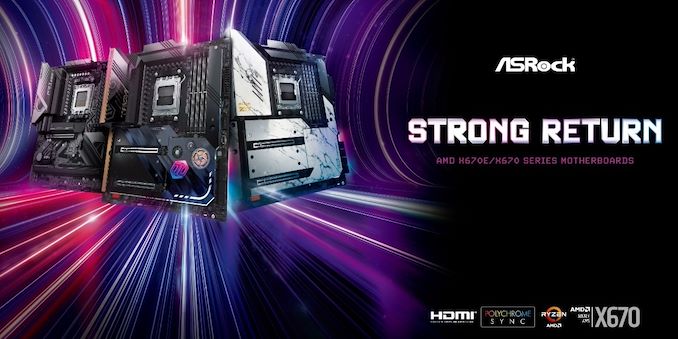
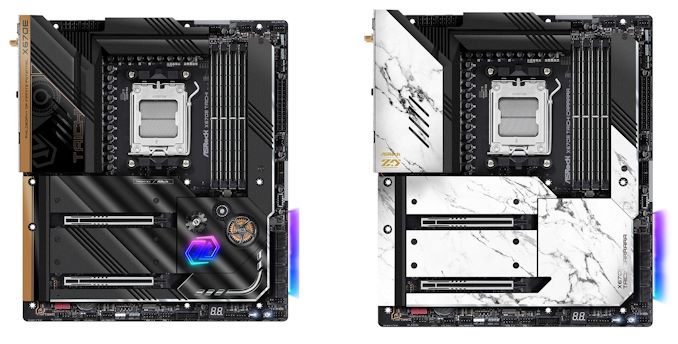
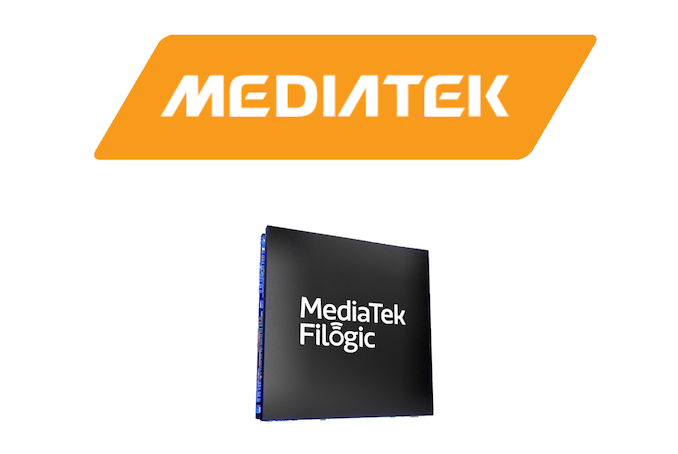

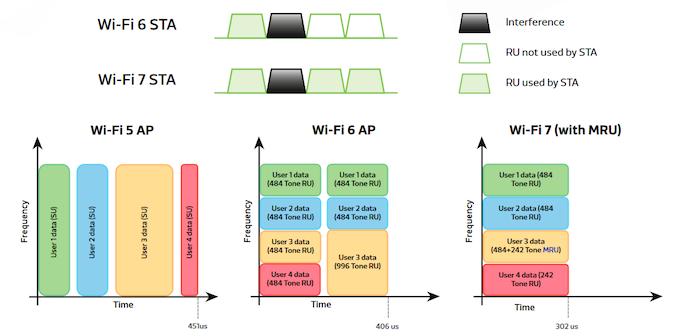

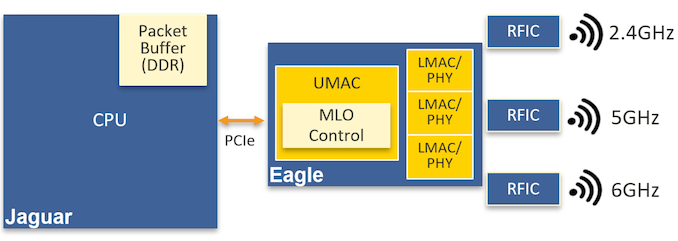
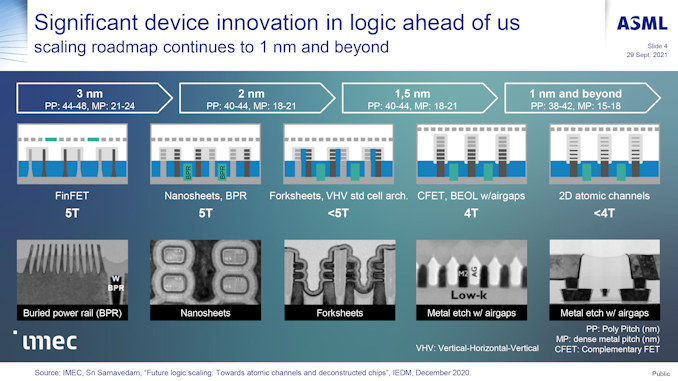
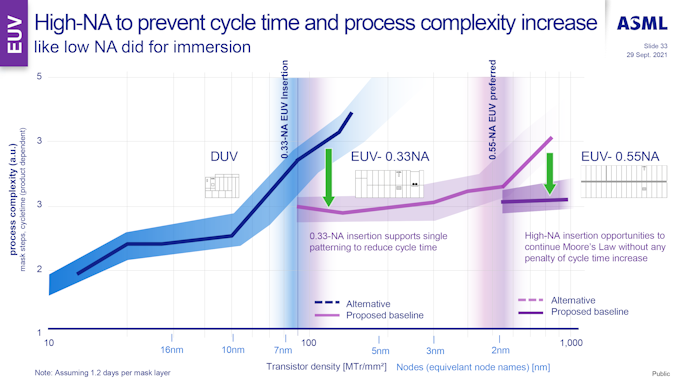

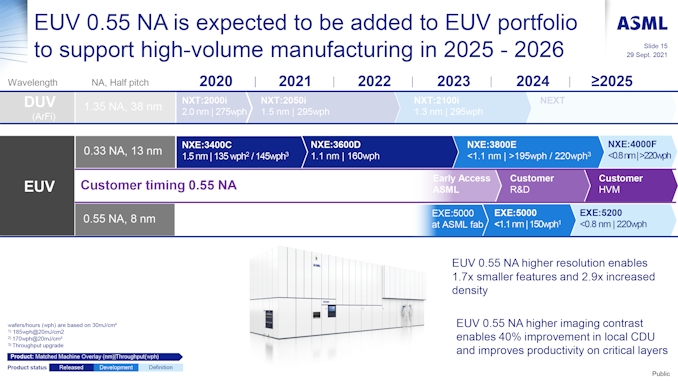
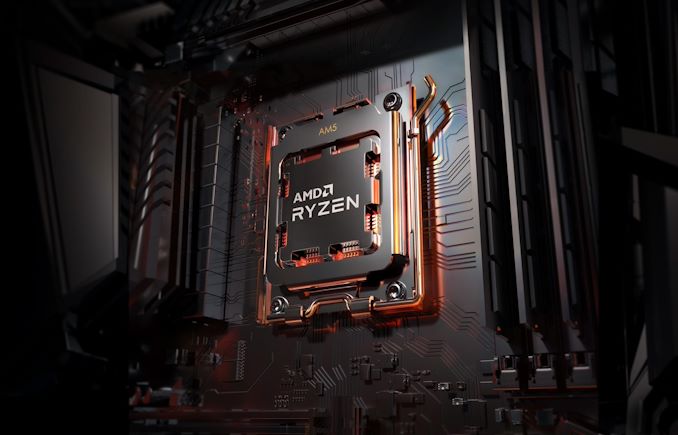
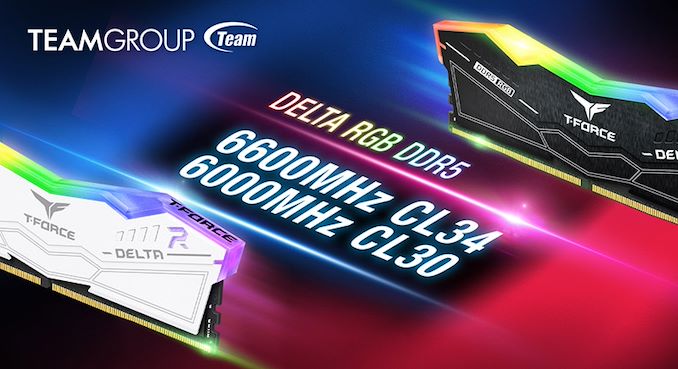
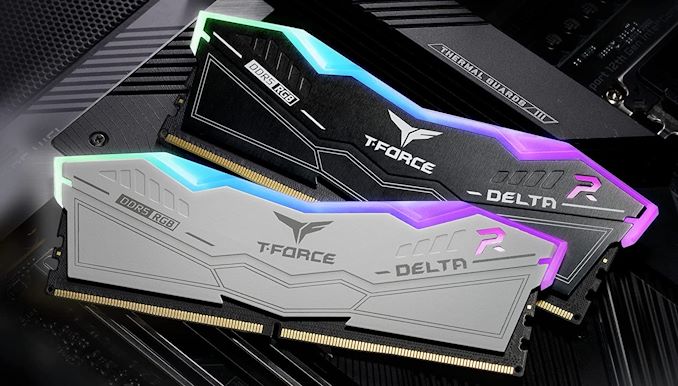
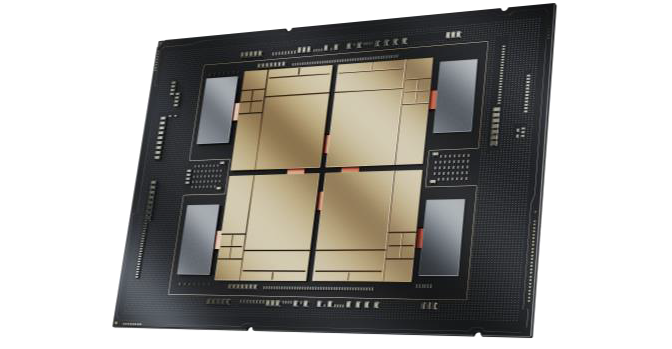
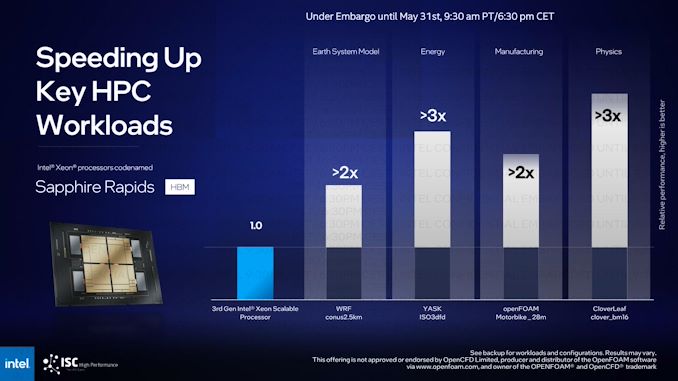
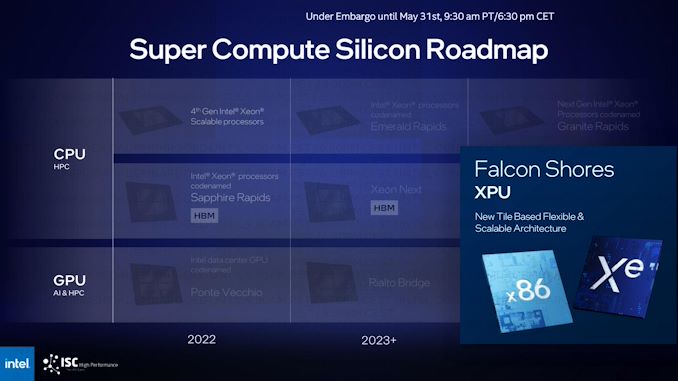






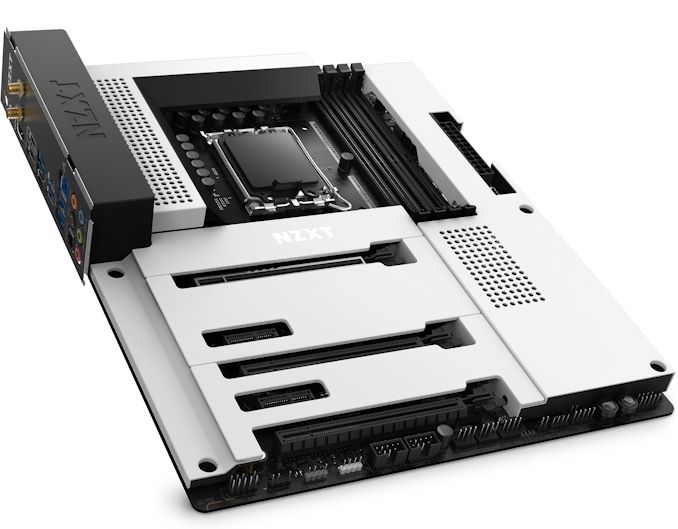

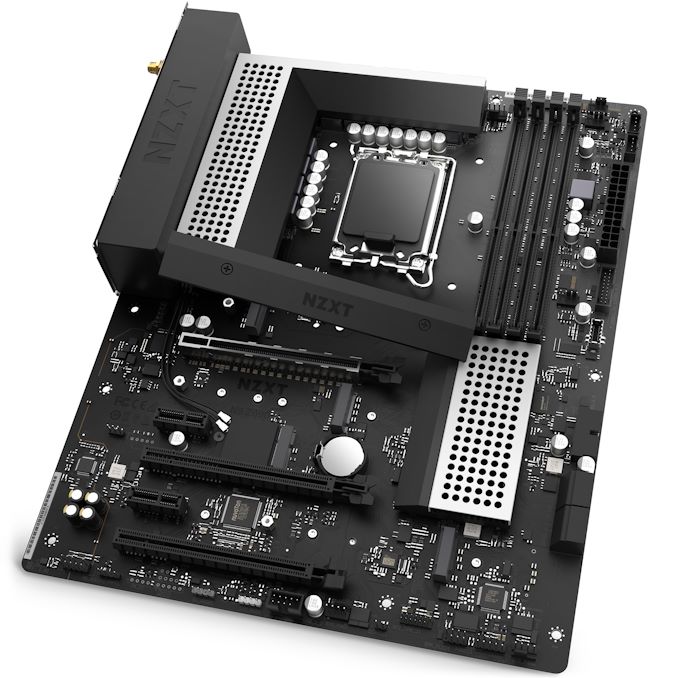
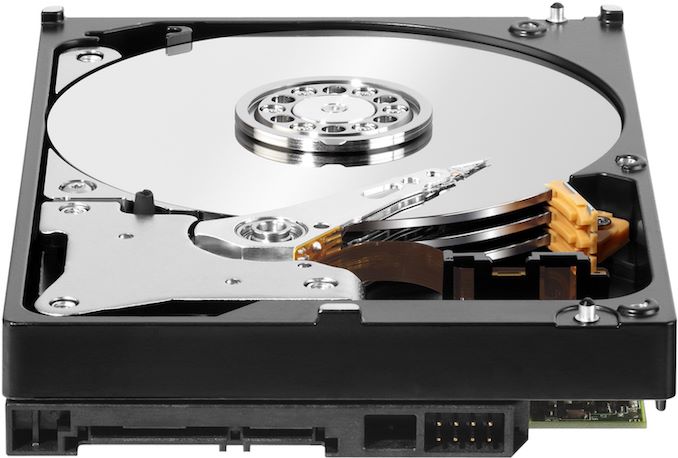
















Bookmarks